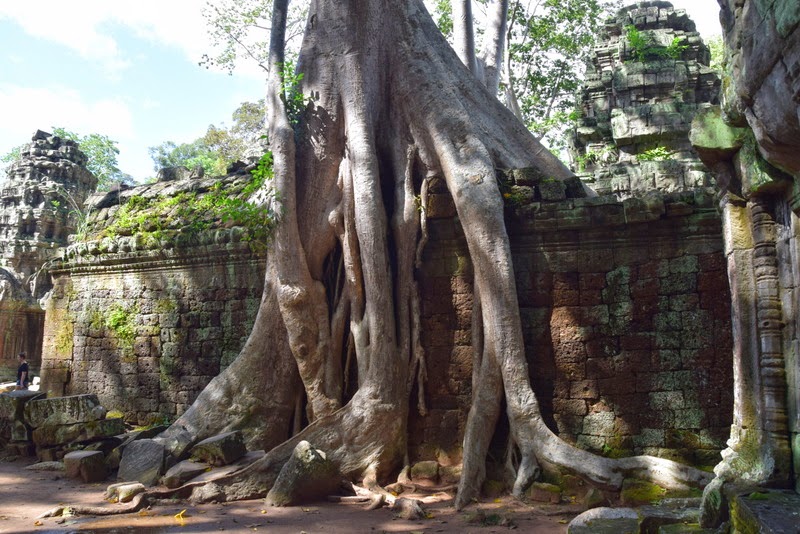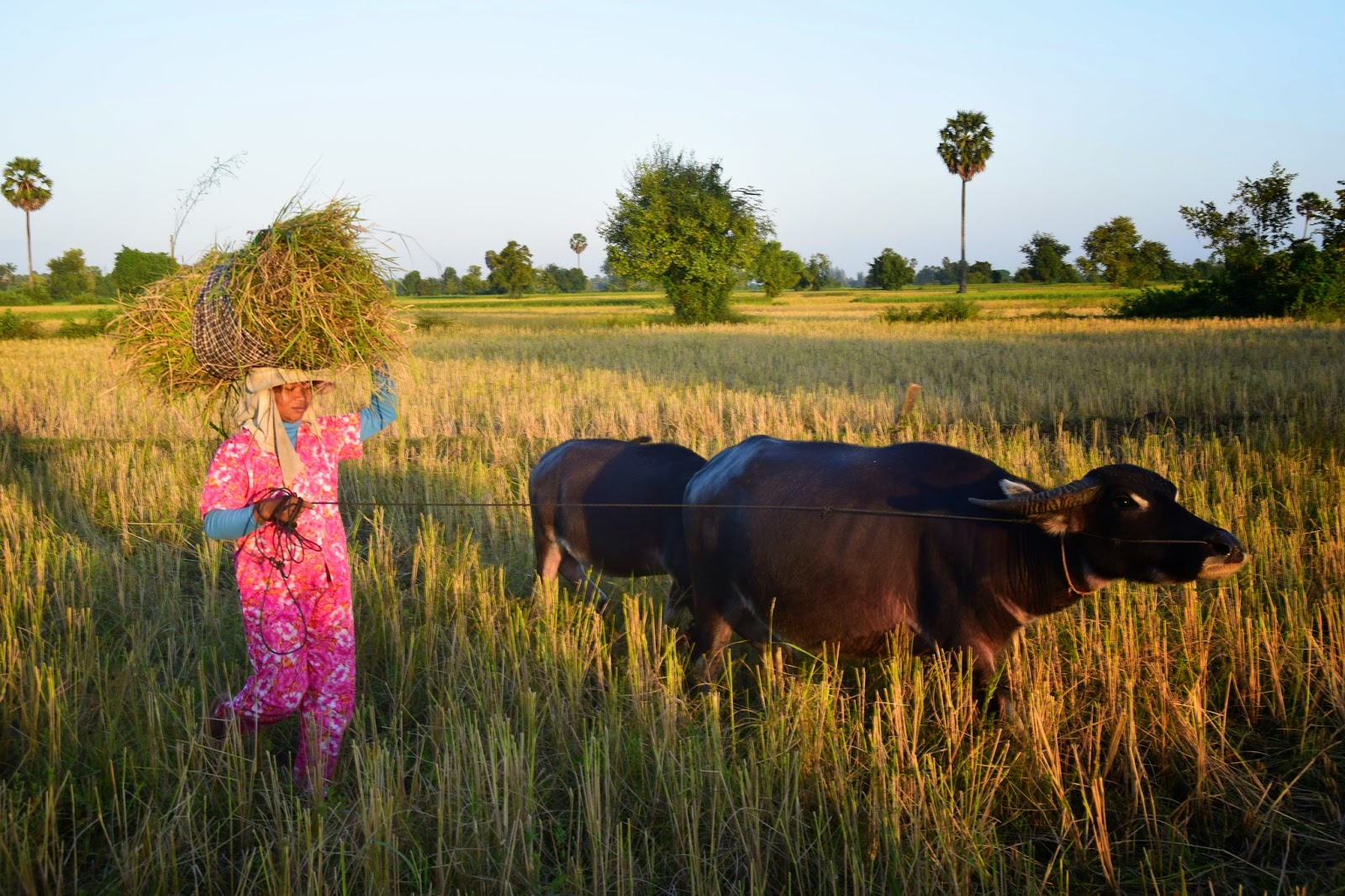First an admission. Up to a year ago we had not heard of Angkor
Wat and so it was not until we had watched a couple of films on Pandaw that we
started to appreciate the enormity of what we were about to encounter. The
whole area covers some 400 km2 and we visited three of the main sites.
Getting up at 4:00 so that we could witness the sunrise our
guide (Pat who was just brilliant) took us through the Eastern gate of Angkor
Wat. This was a quite entrance away from the hordes. It was eerily strange to
see huge structures emerging from the gloom as we walked to the centre of the
site. It is vast - for example the surrounding rectangular moat is 2 kms by 1.0 km
and almost 200 metres wide. As we moved along the side of the temple we approached the
Western Gate and here were the masses. There are some 3000 visitors a day to
the site. We did manage to find a quiet spot for our only selfie.
There
are 5 towers with the centre one some 213 metres high (as compared to St Pauls
at 111 m or the Pyramid of Giza at 146 m). Considering this is built on silty
ground the work that had gone into making stable foundations can only be
guessed at. Suffice to say the lines are still true. The skill of the masons
was also formidable with no mortar used and the face of the stones so true that
you had to look hard to see the joints.
Once
laid they were carved in intricate detail much of which depicts the history
of this war ravaged area. (The Kymers (Cambodians) and Champs (Vietnamese) have
warred for centuries.)
The
carving below has even been hollowed out behind.
A
100 + metre long history lesson
With
joints barely visible. There are millions of hours of work. Built in the first
half of the 12C by King Suryavarman II it took only 40 years to build. A
project of epic proportions.
The
third level of the temple is accessed by steep steps. Fortunately the originals
have been protected by timber steps with a hand rail to aid climbing. Most
needed a rest after this!
The whole site is well maintained with the moat clear and
reflective.
By
comparison the adjoining Angkor Thom site is even bigger although maintenance
is a bit more problematic.
We
approached through the West gate which was beautiful with the dappled light of
the tree lined road giving way to a huge face looking down at us.
The
Bayon is in the centre of this site and also has a reflective pool which
emphasises the 49 towers with their 4 heads on each face. The faces are all
different and have varying hints of a smile.
You
can tour round on an elephant. It sounds surprising but this one rather crept up
on Helen giving this animal lover quite a jump.
The
carvings and stories are more related to every day affairs such as cooking, building
and other antics. This man is looking a bit cross – probably because the turtle
has bitten his bottom.
Although
the quality of the stone is less than Angkor Wat (the quarry ran out) some of the features are nonetheless remarkable. These fins (and their
ties) are all from one piece of stone.
Every
where you look there were faces. They looked a bit more relaxed than the next
group….
OK its hot – where’s our lunch and a cool beer?
A
unique photo – which I suspect our guide does with most of his guests!
After a pleaseant and cooling lunch we were ready for our
third site at Ta Prohm.
We
stopped at an old bridge which rather gave a flavour of things to come with the
silk cotton trees finding the stones to their liking. They flow and look almost
as if they have been poured from a jug and then set.
The
older ones love the moist and slightly cooler micro climate of the buildings. This is where Tomb
Raider was filmed. The site certainly sparks the imagination.
Some
repairs (they were really rebuilds) were being undertaken by a French group.
There is still a bit of work to do.
The
before and after shots show that this colonnade was a pile of stones when the
site was discovered.
The
size of some of the trees was huge. They are quick growing. Some are
slowly being removed to enable the stonework to be repaired while others a left
as they add ambiance and add to the history.
The
site was quite busy so patience was required to get these sort of pictures. Mind
you the plague of people wanting to take selfies with every picture is quite
hard to comprehend. How do they think they can improve on this - they can't all be Oscar Wilde's offspring.
It
is a little ironic that some of the trees that are slowly strangling the
structure are in turn being attacked by strangler figs.
After
almost 12 hours we were ready to head back to our hotel, a beer and air conditioning however, we could not resist having a small
stop to see this water wheel which was being enjoyed by the local children (it
being a Sunday).
If you are heading towards Asia then a couple of days in Siem
Reap is a must with a visit to this 7th wonder of the world. Be
quick as I suspect access will start to be restricted given that some of the
visitors have no idea about respecting the stonework.


































































